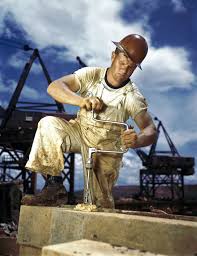
Spectacular and serious construction accidents get the most press in the New York City media. The press highlights the crane accidents, the trench collapses and scaffolding failures. However, the alarming growth in the number of construction accidents in NYC is not limited to the mishaps that draw media attention. Construction workers face danger every day. The dangers cause injuries that may not show up on the evening news, but they could be life-changing nevertheless.
A blog in the online publication Citylimits.org describes some of the accidents that garner less attention but nevertheless cost many construction workers their mobility, their enjoyment of life and their jobs.
Last month, a bucket of mortar fell and hit a worker on the shoulder. Ladder accidents caused falls of four and five feet. This may not sound like much, but it can cause serious injury. A worker in Queens fell one-and-a-half stories onto a roof. None of these workers died, but all were injured.
The writer of this blog (UrbaNERD) speculates that New Yorkers are so accustomed to hearing jackhammers and looking at scaffolding everywhere that they don’t think about the inherent dangers to workers and passersby. Hardhats are part of the fabric of the city.
It turns out the gravity, not spectacular equipment failures, are the primary culprit. The majority of construction accidents involve workers falling from heights or objects falling on workers. The writer quotes a Department of Buildings (DOB) study that reported the following: 39 percent of accidents in 2014 involved workers falling and another 25 percent involved equipment and construction materials falling on workers.
The DOB tracks construction accidents in the city and provides detailed reports that show that the current construction boom has costs far beyond the price of the building.
Here is the story told by some December DOB reports:
- A worker hurt his knee when he fell after missing a step on some stairs
- A worker ran over his own foot
- A worker sustained multiple fractures when he fell 12 feet onto some train tracks
- An electrician fell about 14 feet when he stepped onto some sheetrock that collapsed
- A worker injured his foot while passing a sheet to another worker
- A pedestrian tripped and fell on a pedestrian bridge over some cables
- A worker fell while trying to adjust his hat when climbing a ladder
- A worker was burned while using a torch
- A worker suffered face lacerations when hit while stripping forms
- A worker was hit in the back by a jack while installing an end cap
- A worker was hit by a falling bolt
- A worker sustained a back injury while unloading a truck
These incidents are only half the non-fatal construction accidents reported in December. And of course, there are almost certainly many minor injuries that are never reported. The worker may not report it, or the contraction may not report it. However, it is almost certain that some injuries, despite the efforts of the DOB, go unreported. This means that the human cost of the construction boom is even greater than the official numbers suggest.
Moreover, seemingly minor accidents may cause more serious problems later on. A minor knee injury could be aggravated to the point where surgery is required. A back strain could set the stage for damaged discs in the years to come. Just because a worker can return to a job site does not mean that an injury does not hurt, either now or later on.

